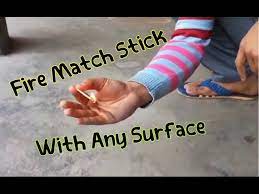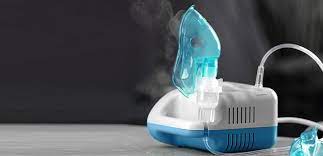Strike-anywhere matches can be lit on many surfaces, from sandpaper to shoe soles. Safety matches, however, require a more specific striking surface to ignite.
Knowing how to light a match without the box is an important skill that can come in handy when you’re stranded outdoors or dealing with unexpected situations at home.
Using a fingernail
If you don’t have a matchbox, there are still ways to light a match. You can use your thumbnail, a piece of sandpaper, or even your teeth to strike a match. However, this technique is more challenging to perform and requires a high level of precision to avoid injury. Moreover, it should be performed only in situations where you can afford to make mistakes, since matches are dangerous when mishandled. It is recommended to prioritize practical and reliable methods instead of these more adventurous and imaginative ones.
First, position your thumbnail against the head of the matchstick. It should cover half of the head. Position it at a slight angle, away from your body and any flammable materials. Strike the matchstick with a swift and controlled motion. The friction between your thumbnail and the matchstick should generate enough heat to ignite it.
You can also try striking a match on a rough surface, such as concrete, brick, or sandpaper. However, this method should be the last resort, as it could burn your finger if you apply too much pressure. In addition, the matchstick may become wet if you use this method. Consequently, you must remove your index finger as soon as the match starts burning. This will prevent you from burning your fingers and avoid any injuries.
Striking against other matches
A valuable skill to have, mastering the art of lighting a match without its box can be a lifesaver in emergency situations. Whether you’re camping in the wild or preparing for an unexpected power outage at home, knowing how to light a match without its box can save your day.
You can use a variety of surfaces to strike the match against, including your teeth and shoes. The key is to create enough friction and heat to ignite the match head. However, these methods are not practical for all situations, as they require a good deal of practice and precision to achieve success. Additionally, they can pose a safety risk, particularly when used incorrectly.
To light a match against your teeth, first make sure that the fronts of your teeth are as dry as possible. Next, hold the matchstick firmly and strike it against the backs of your teeth. Apply pressure with minimal force, as excessive pressure may cause the match to break or ignite your mouth.
Another way to strike a match is by using a rock or other rough material. Make sure that the surface of the rock is abrasive to ensure that enough heat is generated to ignite the matchstick’s ignitable tip. If necessary, you can also use a flashlight or lighter to strike the match against, but be careful not to burn yourself.
Striking against a stone
If you need to light a match without the box in a hurry, try striking the match against a stone. The friction produced by this method can generate enough heat to ignite a paper or safety match. It also makes it easier to avoid burns, especially if you can control the flame while it’s burning. You can use a rock, zipper, or sandpaper as a makeshift striker, but you should apply minimal pressure to prevent accidental explosions or fires.
This alternative technique is a great trick to have in your back pocket if you’re camping or hiking outdoors. It’s essential to choose a rock with an abrasive surface, and it should be completely dry (although if you have waterproof matches, this won’t matter). Once you’ve found a suitable rock, simply drag the match across the abrasive surface in one strong motion, and the match will ignite.
The different methods for lighting a match without the box can be impressive, but they all require a high level of skill and precision to succeed. Always exercise caution when handling these techniques, as they can cause burns if not handled properly. It’s also important to keep water or a fire extinguisher nearby in case the match catches fire or explodes. Lastly, remember to test each of these methods for ignitability before using them in emergency situations.
Striking on your teeth
Matches are an essential item to carry on camping trips or in your toolkit, and knowing how to light a match without the box is a valuable skill. This trick can be a lifesaver in the wild or during unexpected situations like power outages at home. While there are many different ways to light a match without the box, some of them require more skills than others and can be dangerous if not done properly. Mastering this valuable skill will give you an extra edge in an emergency and allow you to channel your inner MacGyver.
Start by finding a rough surface that can generate enough heat to ignite the match head. This can include sandpaper, unpolished stone, or even the rough part of your shoe sole. Next, choose a match that can easily ignite. Wooden “strike on box” matches are generally easier to strike than paper or “strike anywhere” matches, but you can try them all.
Position the match against your chosen surface and apply firm pressure, but avoid excessive force that may break or extinguish the matchstick. Drag the matchhead against the surface smoothly, applying constant pressure.
Then, position the matchstick between your thumb and index finger, holding it with a firm grip. Pull your fingers downwards to expose the matchhead, and then swiftly slide it against the striker.





